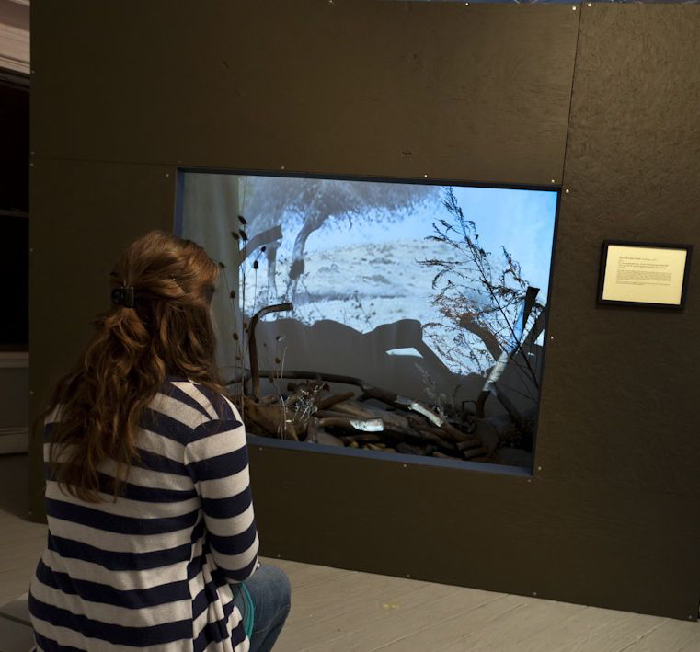Late Anthropocene: 3 Continents, 2011
Hotspots collaborators: Ann Rosenthal (Pittsburgh), Karin Bergdolt (Germany), Beth Manoian (Dubai)
video, salvaged automotive exhaust systems, canvas, paint, wood, metal tracking
See video clip to the right.
Viewing the landscape from the point of view of a ‘natural’ history diorama, we offer a question forged of rusty mufflers in which the past and future converge. A once yellow brick road, and a continuous landscape captured in Pittsburgh; Nurnberg, Germany; and Dubai circle the globe probing where it is we are heading. Video captured from freeways on three continents.
Hotspots: What comes after oil? is an international collaboration imagining the paradigm shift required to envision life-enhancing economies and wise use of our natural resources.
Installation text:
An-thro-po-cene |’anθropo, sene |
noun
the current geological age, viewed as having begun about 200 years ago with the onset of significant human impact on the ecosphere.
In the mid-21st century, geologists formally agreed that a new geologic epoch, the Anthropocene, had begun. The term reflects the lasting impact humans have had on the planet, altering the course of evolution in ways that will last tens of millions of years—a distinction formerly reserved for natural geologic events, such as earthquakes or volcanic eruptions. These human impacts include habitat destruction and the introduction of invasive species, which have caused widespread extinctions; ocean acidification, which has changed the chemical makeup of the seas; and urbanization, which has vastly increased rates of sedimentation and erosion.
The term “Anthropocene” was originally coined by Paul Crutzen, who shared the 1995 Nobel Prize for discovering the effects of ozone-depleting compounds.
Article:
“Mattress Factory installations look at process, collaboration” Trib Live, April 10, 2011, Kurt Shaw http://www.pittsburghlive.com/x/pittsburgh trib/ae/museums/s_731348.html

